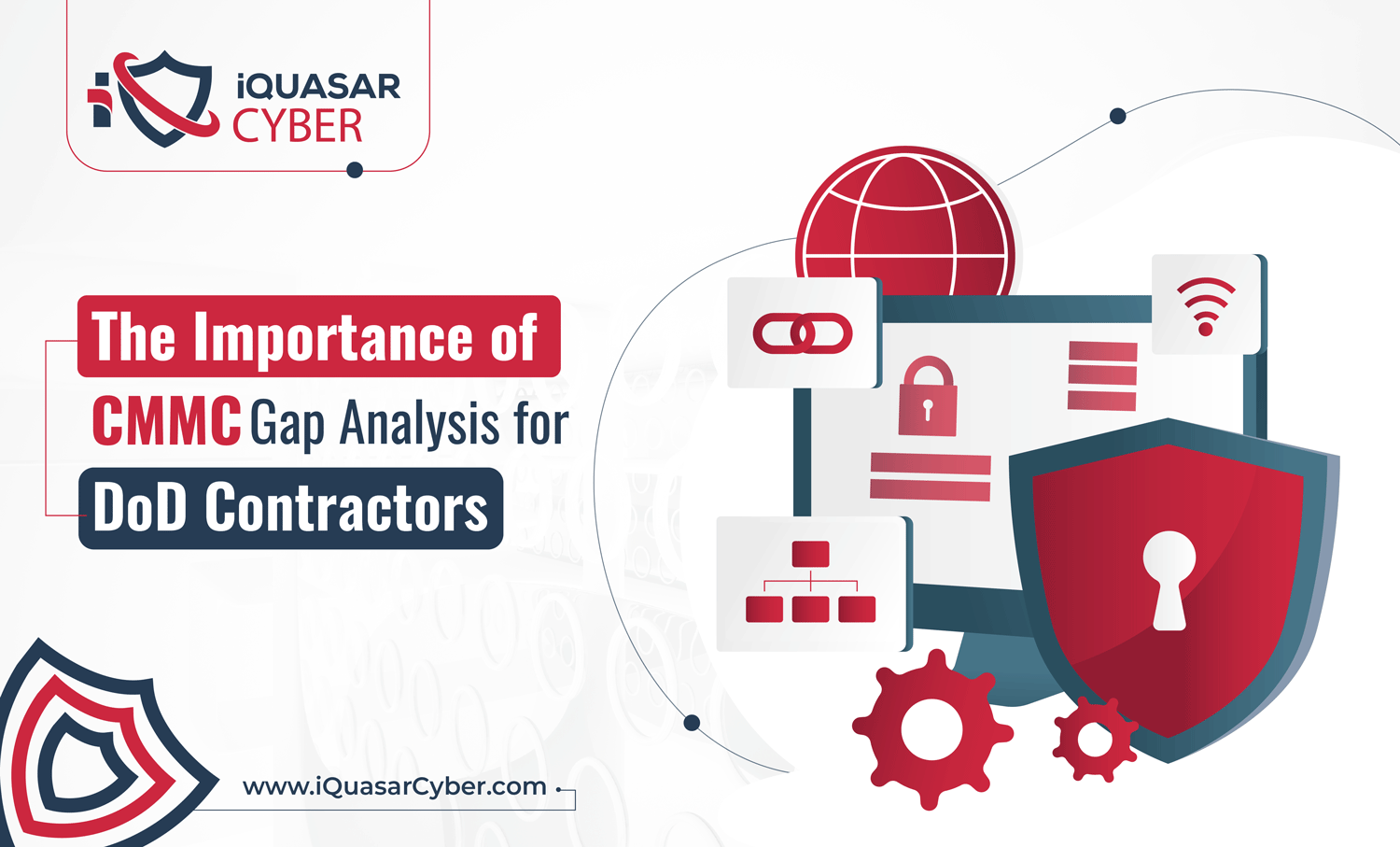In the evolving landscape of cybersecurity threats, the Department of Defense (DoD) has implemented the Cybersecurity Maturity Model Certification (CMMC) as a standard for defense contractors to ensure the protection of Controlled Unclassified Information (CUI) and Federal Contract Information (FCI). As part of the preparation for certification, conducting a CMMC gap analysis is critical for defense contractors. This blog explores the importance of CMMC gap analysis and how it can guide organizations toward achieving compliance and enhancing their cybersecurity posture.
What is CMMC Gap Analysis?
CMMC gap analysis is a comprehensive review process that helps organizations identify the differences between their current cybersecurity implemented controls and the requirements set forth by the CMMC framework. This analysis focuses on all aspects of the organization’s cybersecurity control framework, including policies, procedures, practices, and safeguards across different CMMC levels.
The primary goal of a gap analysis is to pinpoint specific controls where improvements are needed, allowing organizations to develop a targeted action plan to address deficiencies and meet CMMC requirements before undergoing the formal C3PAO assessment process.
Key Benefits of Conducting a CMMC Gap Analysis
- Identifies Current Cybersecurity Posture
A gap analysis provides a clear snapshot of an organization’s cybersecurity strengths and weaknesses. This insight is invaluable for understanding how well the organization protects its information and where vulnerabilities exist.
- Facilitates Targeted Improvements
Organizations can prioritize their efforts and resources toward making impactful improvements by identifying specific gaps in cybersecurity practices. This targeted approach ensures efforts focus on areas that will most significantly enhance security and compliance.
- Reduces Risk of Non-Compliance
Understanding the gaps in compliance before undergoing a CMMC assessment significantly reduces the risk of failing the certification process. It allows organizations to address compliance issues proactively, saving time, resources, and the potential costs associated with assessment failure and lower scores. Early detection of possible “Not Met” ratings for each control will significantly improve the chances of remediating the gaps and passing the C3PAO assessment.
- Enhances Security Against Threats
Closing gaps not only aids in achieving compliance but also strengthens the organization’s defense against cyber threats. By adhering to CMMC requirements, organizations implement robust cybersecurity practices that protect sensitive information from unauthorized access and breaches.
- Supports Strategic Planning
CMMC gap analysis results can lead to strategic planning and implementations, helping organizations allocate resources effectively and budget for long-term cybersecurity initiatives. This strategic approach ensures continuous improvement and adaptation to evolving cybersecurity challenges.
Steps in Conducting a CMMC Gap Analysis
- Understand CMMC Requirements: Thoroughly understand your organization’s CMMC level and associated requirements.
- Assess Current Cybersecurity Practices: Evaluate your cybersecurity practices, policies, and controls against the CMMC framework to identify existing security measures and gaps.
- Identify Gaps: Clearly identify where your practices do not meet CMMC standards. This includes gaps in documentation, processes, and technical controls. For current CMMC level 2 compliance, use NIST 800-171 (rev 2) based 110 controls as a control framework for control gaps assessment.
- Develop a Remediation Plan: Post CMMC gap analysis, develop a detailed action plan outlining steps to achieve compliance for each identified gap. This plan should prioritize gaps based on risk and include timelines for implementation. The plan should also review each CMMC level objective within each control to meet the requirement and achieve a high score.
- Implement Plan of Action and Milestones(POA&M): Execute the remediation plan based on the CMMC gap analysis and POA&M, making necessary improvements to policies, procedures, and technical controls.
- Monitor and Review: As prescribed by leading risk management framework practices, Monitor the effectiveness of implemented changes and review the organization’s compliance status regularly to ensure ongoing adherence to CMMC requirements.
For defense contractors, the journey to CMMC certification is both a requirement and an opportunity to enhance cybersecurity resilience. Conducting a thorough CMMC gap analysis is a critical step in this journey, providing a roadmap for compliance. As a Cyber-AB Registered Practitioner Organization (RPO), our team of experts boasts extensive knowledge of CMMC, NIST 800-171 regulations, FedRAMP, NYDFS, HIPAA, PCI, and more.
iQuasar Cyber helps you identify and address gaps proactively, ensuring you are well-prepared for the CMMC C3PAO assessment, reducing the risk of non-compliance, and, most importantly, safeguarding sensitive information against cyber threats.
